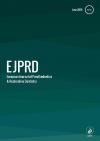European Journal of Prosthodontics and Restorative Dentistry

- Cover Date:
- June 2019
- Print ISSN:
- 0965-7452
- Electronic ISSN:
- 2396-8893
- Vol:
- 27
- Issue:
- 2
Accuracy of inlay and onlay restorations based on 3D printing or milling technique - a pilot study
Purpose: To evaluate and compare the accuracy of 3D printing versus CAD/CAM milling in
the fabrication of inlay/onlay restorations based on pilot experiments. Material and methods:
Different shaped inlay/onlay cavities were prepared on six extracted and root canal treated
human molar teeth. Digital impressions were taken with a CEREC AC Omnicam© intraoral
scanner. Based on the same impression data, nano-ceramic restorations were performed using milling (M group) and composite restorations (from material not for clinical use) using
Multijet 3D printing technology (3D group). The accuracy was evaluated by measuring the
marginal and internal gaps based on x-ray microtomography 3D imaging scans. The internal
fit was evaluated using a replica technique with A-silicone impressions and weighing. Results:
The 3D group restorations showed better marginal and internal fit values. The mean internal
gap values of the 3D group restorations were 40-60% lower compared to the M group restorations, the difference being statistically significant at most measuring points (p<0.05, t-test).
Conclusions: The accuracy of the Multijet 3D printing is at least at the same level as the milling technique in the fabrication of dental inlay/onlay restorations. Additional investigations
are needed to develop the 3D printing process and suitable materials for dental applications
Keywords
3D Printing
CAD/CAM
Internal Fit
Digital Impression
Marginal Fit
10.1922/EJPRD_01814Ahlholm09
- Article Price
- £15.00
- Institution Article Price
- £
- Page Start
- 56
- Page End
- 64
- Authors
- Mr. Pekka Ahlholm, Prof. Kirsi Sipilä, Prof. Pekka Vallittu, Dr. Ulla Kotiranta, Prof. Reijo Lappalainen
Articles from this issue
- Title
- Pg. Start
- Pg. End
- Accuracy of inlay and onlay restorations based on 3D printing or milling technique - a pilot study
- 56
- 64
- Comparison of Marginal and Internal Defects of Indirect Inlay Patterns Fabricated Using Additive Manufacturing and Traditional Methods – An Ex Vivo Study
- 66
- 75
- Influence of Ceramic Materials on Biomechanical Behavior of Implant Supported Fixed Prosthesis with Hybrid Abutment
- 76
- 82
- Early Effect of Implant Supported Rehabilitation and Nocturnal Bruxism on Maximum Occlusal Force: A Cross-Sectional Study
- 84
- 89
- Clinical Survival of Indirect, Anterior Surface-Retained Fiber-Reinforced Composite Fixed Dental Prosthesis: Up to 3-Year Follow-up
- 90
- 94
